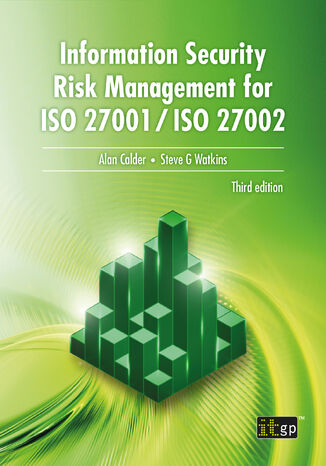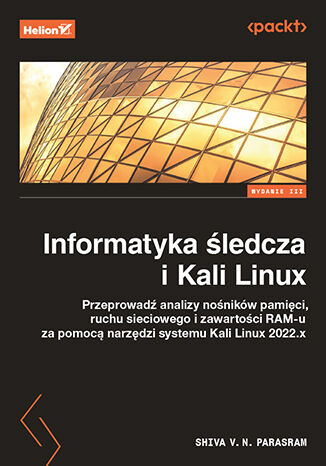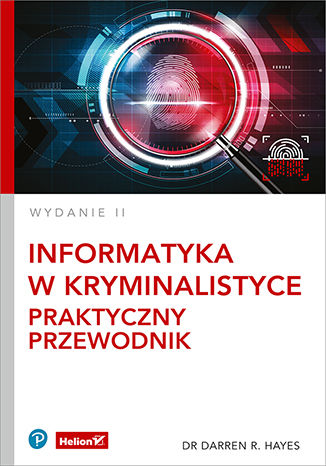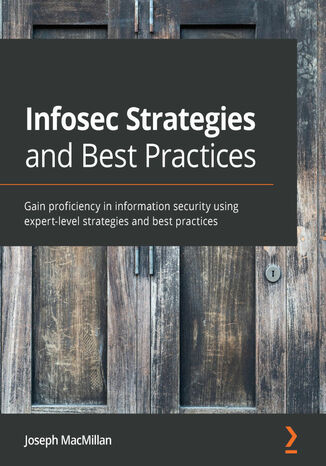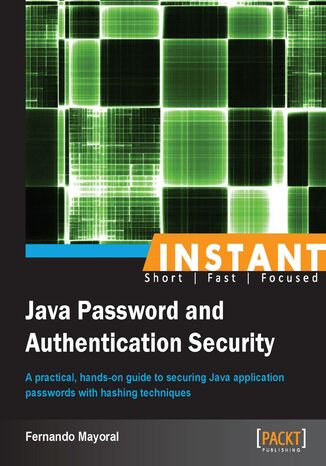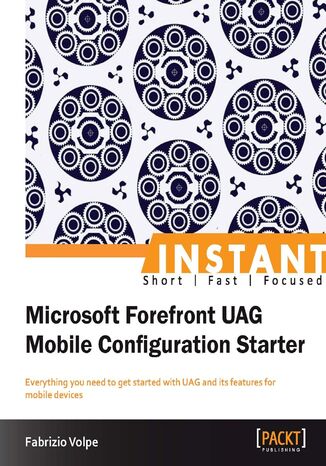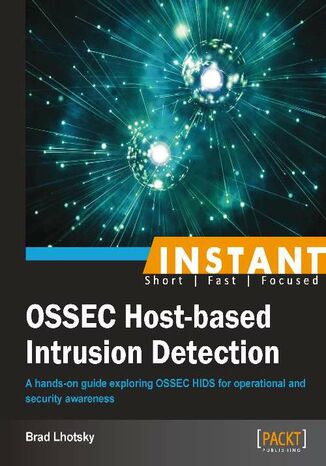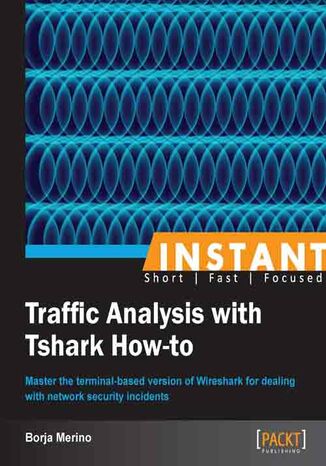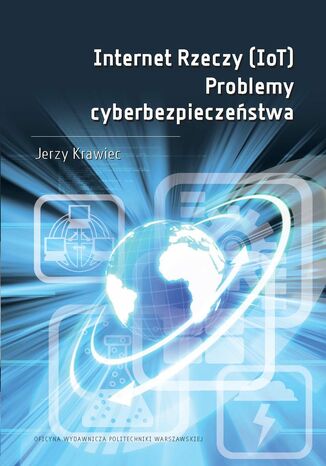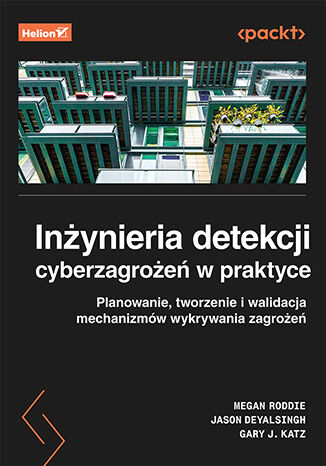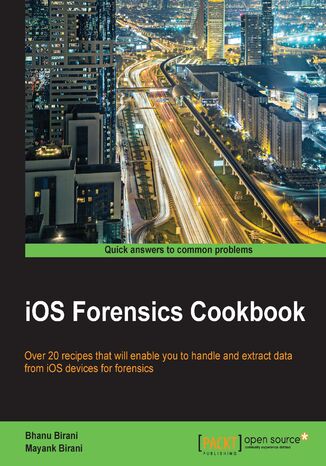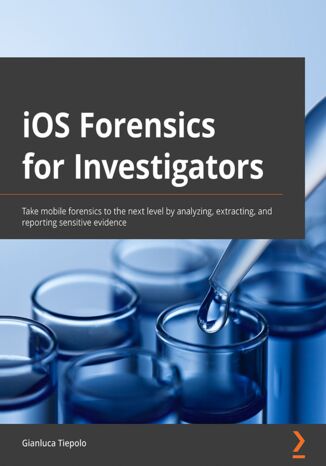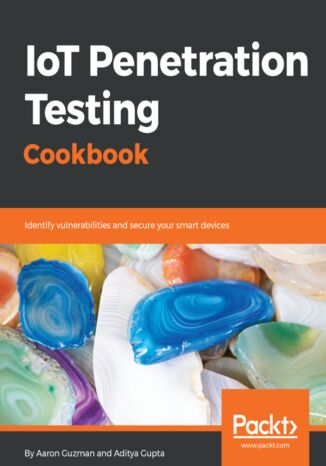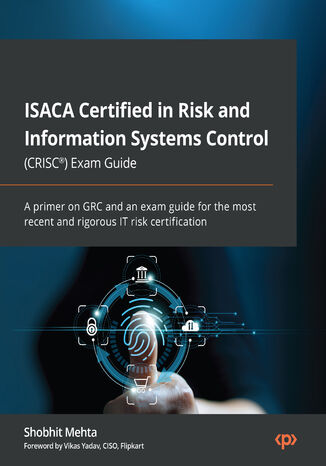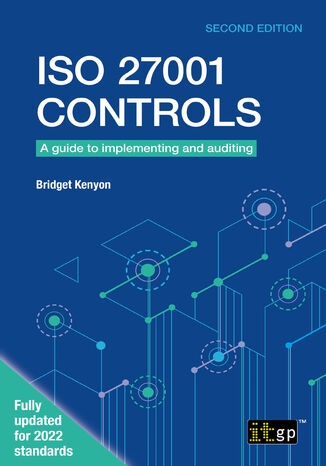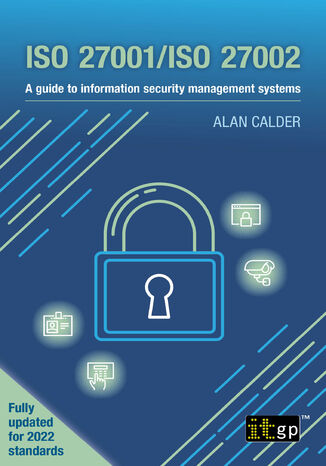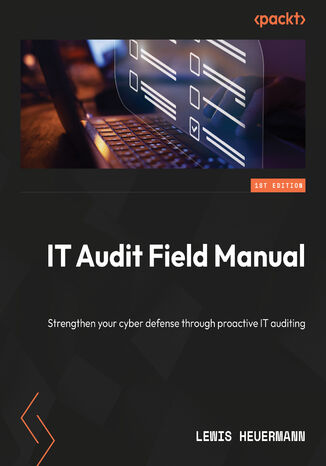Kategorie
Ebooki
-
Biznes i ekonomia
- Bitcoin
- Bizneswoman
- Coaching
- Controlling
- E-biznes
- Ekonomia
- Finanse
- Giełda i inwestycje
- Kompetencje osobiste
- Komputer w biurze
- Komunikacja i negocjacje
- Mała firma
- Marketing
- Motywacja
- Multimedialne szkolenia
- Nieruchomości
- Perswazja i NLP
- Podatki
- Polityka społeczna
- Poradniki
- Prezentacje
- Przywództwo
- Public Relation
- Raporty, analizy
- Sekret
- Social Media
- Sprzedaż
- Start-up
- Twoja kariera
- Zarządzanie
- Zarządzanie projektami
- Zasoby ludzkie (HR)
-
Dla dzieci
-
Dla młodzieży
-
Edukacja
-
Encyklopedie, słowniki
-
E-prasa
- Architektura i wnętrza
- BHP
- Biznes i Ekonomia
- Dom i ogród
- E-Biznes
- Ekonomia i finanse
- Ezoteryka
- Finanse
- Finanse osobiste
- Firma
- Fotografia
- Informatyka
- Kadry i płace
- Kobieca
- Komputery, Excel
- Księgowość
- Kultura i literatura
- Naukowe i akademickie
- Ochrona środowiska
- Opiniotwórcze
- Oświata
- Podatki
- Podróże
- Psychologia
- Religia
- Rolnictwo
- Rynek książki i prasy
- Transport i Spedycja
- Zdrowie i uroda
-
Historia
-
Informatyka
- Aplikacje biurowe
- Bazy danych
- Bioinformatyka
- Biznes IT
- CAD/CAM
- Digital Lifestyle
- DTP
- Elektronika
- Fotografia cyfrowa
- Grafika komputerowa
- Gry
- Hacking
- Hardware
- IT w ekonomii
- Pakiety naukowe
- Podręczniki szkolne
- Podstawy komputera
- Programowanie
- Programowanie mobilne
- Serwery internetowe
- Sieci komputerowe
- Start-up
- Systemy operacyjne
- Sztuczna inteligencja
- Technologia dla dzieci
- Webmasterstwo
-
Inne
-
Języki obce
-
Kultura i sztuka
-
Lektury szkolne
-
Literatura
- Antologie
- Ballada
- Biografie i autobiografie
- Dla dorosłych
- Dramat
- Dzienniki, pamiętniki, listy
- Epos, epopeja
- Esej
- Fantastyka i science-fiction
- Felietony
- Fikcja
- Humor, satyra
- Inne
- Klasyczna
- Kryminał
- Literatura faktu
- Literatura piękna
- Mity i legendy
- Nobliści
- Nowele
- Obyczajowa
- Okultyzm i magia
- Opowiadania
- Pamiętniki
- Podróże
- Poemat
- Poezja
- Polityka
- Popularnonaukowa
- Powieść
- Powieść historyczna
- Proza
- Przygodowa
- Publicystyka
- Reportaż
- Romans i literatura obyczajowa
- Sensacja
- Thriller, Horror
- Wywiady i wspomnienia
-
Nauki przyrodnicze
-
Nauki społeczne
-
Podręczniki szkolne
-
Popularnonaukowe i akademickie
- Archeologia
- Bibliotekoznawstwo
- Filmoznawstwo
- Filologia
- Filologia polska
- Filozofia
- Finanse i bankowość
- Geografia
- Gospodarka
- Handel. Gospodarka światowa
- Historia i archeologia
- Historia sztuki i architektury
- Kulturoznawstwo
- Lingwistyka
- Literaturoznawstwo
- Logistyka
- Matematyka
- Medycyna
- Nauki humanistyczne
- Pedagogika
- Pomoce naukowe
- Popularnonaukowa
- Pozostałe
- Psychologia
- Socjologia
- Teatrologia
- Teologia
- Teorie i nauki ekonomiczne
- Transport i spedycja
- Wychowanie fizyczne
- Zarządzanie i marketing
-
Poradniki
-
Poradniki do gier
-
Poradniki zawodowe i specjalistyczne
-
Prawo
- BHP
- Historia
- Kodeks drogowy. Prawo jazdy
- Nauki prawne
- Ochrona zdrowia
- Ogólne, kompendium wiedzy
- Podręczniki akademickie
- Pozostałe
- Prawo budowlane i lokalowe
- Prawo cywilne
- Prawo finansowe
- Prawo gospodarcze
- Prawo gospodarcze i handlowe
- Prawo karne
- Prawo karne. Przestępstwa karne. Kryminologia
- Prawo międzynarodowe
- Prawo międzynarodowe i zagraniczne
- Prawo ochrony zdrowia
- Prawo oświatowe
- Prawo podatkowe
- Prawo pracy i ubezpieczeń społecznych
- Prawo publiczne, konstytucyjne i administracyjne
- Prawo rodzinne i opiekuńcze
- Prawo rolne
- Prawo socjalne, prawo pracy
- Prawo Unii Europejskiej
- Przemysł
- Rolne i ochrona środowiska
- Słowniki i encyklopedie
- Zamówienia publiczne
- Zarządzanie
-
Przewodniki i podróże
- Afryka
- Albumy
- Ameryka Południowa
- Ameryka Środkowa i Północna
- Australia, Nowa Zelandia, Oceania
- Austria
- Azja
- Bałkany
- Bliski Wschód
- Bułgaria
- Chiny
- Chorwacja
- Czechy
- Dania
- Egipt
- Estonia
- Europa
- Francja
- Góry
- Grecja
- Hiszpania
- Holandia
- Islandia
- Litwa
- Łotwa
- Mapy, Plany miast, Atlasy
- Miniprzewodniki
- Niemcy
- Norwegia
- Podróże aktywne
- Polska
- Portugalia
- Pozostałe
- Przewodniki po hotelach i restauracjach
- Rosja
- Rumunia
- Słowacja
- Słowenia
- Szwajcaria
- Szwecja
- Świat
- Turcja
- Ukraina
- Węgry
- Wielka Brytania
- Włochy
-
Psychologia
- Filozofie życiowe
- Kompetencje psychospołeczne
- Komunikacja międzyludzka
- Mindfulness
- Ogólne
- Perswazja i NLP
- Psychologia akademicka
- Psychologia duszy i umysłu
- Psychologia pracy
- Relacje i związki
- Rodzicielstwo i psychologia dziecka
- Rozwiązywanie problemów
- Rozwój intelektualny
- Sekret
- Seksualność
- Uwodzenie
- Wygląd i wizerunek
- Życiowe filozofie
-
Religia
-
Sport, fitness, diety
-
Technika i mechanika
Audiobooki
-
Biznes i ekonomia
- Bitcoin
- Bizneswoman
- Coaching
- Controlling
- E-biznes
- Ekonomia
- Finanse
- Giełda i inwestycje
- Kompetencje osobiste
- Komunikacja i negocjacje
- Mała firma
- Marketing
- Motywacja
- Nieruchomości
- Perswazja i NLP
- Podatki
- Polityka społeczna
- Poradniki
- Prezentacje
- Przywództwo
- Public Relation
- Sekret
- Social Media
- Sprzedaż
- Start-up
- Twoja kariera
- Zarządzanie
- Zarządzanie projektami
- Zasoby ludzkie (HR)
-
Dla dzieci
-
Dla młodzieży
-
Edukacja
-
Encyklopedie, słowniki
-
E-prasa
-
Historia
-
Informatyka
-
Inne
-
Języki obce
-
Kultura i sztuka
-
Lektury szkolne
-
Literatura
- Antologie
- Ballada
- Biografie i autobiografie
- Dla dorosłych
- Dramat
- Dzienniki, pamiętniki, listy
- Epos, epopeja
- Esej
- Fantastyka i science-fiction
- Felietony
- Fikcja
- Humor, satyra
- Inne
- Klasyczna
- Kryminał
- Literatura faktu
- Literatura piękna
- Mity i legendy
- Nobliści
- Nowele
- Obyczajowa
- Okultyzm i magia
- Opowiadania
- Pamiętniki
- Podróże
- Poezja
- Polityka
- Popularnonaukowa
- Powieść
- Powieść historyczna
- Proza
- Przygodowa
- Publicystyka
- Reportaż
- Romans i literatura obyczajowa
- Sensacja
- Thriller, Horror
- Wywiady i wspomnienia
-
Nauki przyrodnicze
-
Nauki społeczne
-
Popularnonaukowe i akademickie
-
Poradniki
-
Poradniki zawodowe i specjalistyczne
-
Prawo
-
Przewodniki i podróże
-
Psychologia
- Filozofie życiowe
- Komunikacja międzyludzka
- Mindfulness
- Ogólne
- Perswazja i NLP
- Psychologia akademicka
- Psychologia duszy i umysłu
- Psychologia pracy
- Relacje i związki
- Rodzicielstwo i psychologia dziecka
- Rozwiązywanie problemów
- Rozwój intelektualny
- Sekret
- Seksualność
- Uwodzenie
- Wygląd i wizerunek
- Życiowe filozofie
-
Religia
-
Sport, fitness, diety
-
Technika i mechanika
Kursy video
-
Bazy danych
-
Big Data
-
Biznes, ekonomia i marketing
-
Cyberbezpieczeństwo
-
Data Science
-
DevOps
-
Dla dzieci
-
Elektronika
-
Grafika/Wideo/CAX
-
Gry
-
Microsoft Office
-
Narzędzia programistyczne
-
Programowanie
-
Rozwój osobisty
-
Sieci komputerowe
-
Systemy operacyjne
-
Testowanie oprogramowania
-
Urządzenia mobilne
-
UX/UI
-
Web development
-
Zarządzanie
Podcasty
- Ebooki
- Informatyka
- Hacking
Hacking
Czy chciałbyś głębiej wniknąć w świat cyberbezpieczeństwa oraz nowoczesnych technologii? Na pewno zainteresuje Cię w takim razie nasza biblioteka online. Znajdziesz tutaj książki, dzięki którym poznasz metody wykorzystywane przez hakerów. Dowiesz się także, jak skutecznie chronić dane oraz testować programy i wykrywać w nich błędy.
IT Governance Publishing, Alan Calder, Steve G Watkins
This guide navigates through the essential processes of risk management within an ISO 27001/27002 framework. Beginning with foundational principles and methodologies, it systematically details every stage from assessment and analysis to treatment and review. Readers will learn how to apply both qualitative and quantitative techniques to measure impact, likelihood, and risk levels accurately.The book provides clarity on roles, policies, asset classification, and control selection, reinforced by practical tools like gap analysis and risk assessment software. Real-world scenarios and methodologies are contextualized for effective decision-making aligned with international compliance standards.By the end, readers will possess a comprehensive understanding of implementing and sustaining a risk management system that meets ISO 27001/27002 requirements, enabling them to better safeguard information assets and demonstrate regulatory accountability.
Jak prowadzić cyberśledztwo. Zabezpieczanie i analiza dowodów elektronicznych Przestępcy sięgają po coraz to nowsze metody. Inżynierowie potrafią wykrywać ślady nielegalnych działań, jeśli jednak celem jest ujęcie i ukaranie sprawcy, potrzeba czegoś więcej. Zadaniem śledczego jest nie tylko przeprowadzenie badań, ale również zabezpieczenie i analiza dowodów, wreszcie - przedstawienie wyników swojej pracy tak, aby można ich było użyć w postępowaniu sądowym. By tak działać, konieczne jest przyswojenie zasad informatyki śledczej. Ta praktyczna książka zawiera omówienie reguł, jakimi powinien się kierować informatyk śledczy podczas pracy. Przedstawia podstawy kryminalistyki, stanowi też przegląd narzędzi i technik służących do skutecznego badania cyberprzestępstw, a także do efektywnego zbierania, utrwalania i wykorzystywania dowodów elektronicznych. Duży nacisk położono tu na techniki pozyskiwania danych z systemu Windows: opisano sposoby zbierania artefaktów w różnych wersjach systemu, zaprezentowano sposoby analizy pamięci RAM i poczty e-mail w kontekście prowadzenia dochodzenia. Ważną częścią publikacji są rozdziały dotyczące pisania raportów i zasad, których musi przestrzegać biegły sądowy w ramach swojej pracy. Dzięki książce dowiesz się: czym jest proces dochodzeniowy i jakie są zasady pracy z dowodami jakie narzędzia kryminalistyczne pozwalają na efektywną pracę na czym polega proces rozruchu z użyciem BIOS-u, UEFI i sekwencji rozruchowej jak pozyskiwać wartościowe dane znajdujące się w sieci i na urządzeniach jak lokalizować i wykorzystywać najpopularniejsze artefakty systemu Windows z czym się wiąże udział w postępowaniu sądowym lub administracyjnym Dowiedz się, jak powstrzymać cyberprzestępcę!
Aby ująć i ukarać cyberprzestępcę, potrzeba czegoś więcej niż odnalezienie śladów włamania. Informatyk śledczy musi nie tylko prowadzić badania, ale również pozyskiwać i zabezpieczać dowody cyfrowe. Powinien też biegle analizować dowody i pisać raporty w taki sposób, aby można było z nich skorzystać w postępowaniu sądowym. Cała ta praca musi być wykonywana zgodnie z zasadami informatyki śledczej. To drugie wydanie popularnego przewodnika dla śledczych. Dzięki niemu sprawnie przygotujesz się do pracy z narzędziami kryminalistycznymi i zapoznasz się ze stosowanymi w informatyce śledczej technikami. Nauczysz się pozyskiwać informacje o podejrzanych i zabezpieczać znajdujące się w sieci dane, które mogą się okazać istotne w wyjaśnieniu sprawy. Zdobędziesz także potrzebną wiedzę o topologiach sieciowych, urządzeniach i niektórych protokołach sieciowych. Bardzo ważnym elementem publikacji jest rozdział poświęcony zasadom tworzenia raportów kryminalistycznych. Cenne informacje i wskazówki zawarte w przewodniku pomogą Ci odnieść sukces w dochodzeniach korporacyjnych lub śledztwach w sprawach karnych. W książce: proces dochodzeniowy i zasady pracy z dowodami walidacja narzędzi, oprogramowania i metod badawczych tworzenie i walidacja sterylnych nośników odkrywanie i analiza artefaktów przechwytywanie zawartości pamięci RAM analiza osi czasu, mediów, ciągów znaków i odzyskiwanie usuniętych plików Informatyka śledcza: Twoja tajna broń!
Aby pomyślnie przeprowadzić dochodzenie cyfrowe, poza specjalnymi umiejętnościami i wiedzą techniczną musisz dysponować odpowiednimi narzędziami. Z rozwoju technologii korzystają również przestępcy, którzy popełniają swoje występki na wiele dotychczas nieznanych sposobów. W tych warunkach bezcenną pomoc możesz znaleźć w Kali Linuksie - potężnym systemie specjalnie przygotowanym do prowadzenia testów penetracyjnych i dochodzeń w informatyce śledczej. Ta książka pomoże Ci w doskonaleniu umiejętności potrzebnych na każdym etapie dochodzenia cyfrowego, od zbierania dowodów, poprzez ich analizę, po tworzenie raportów. Dzięki wielu wskazówkom i praktycznym ćwiczeniom przyswoisz techniki analizy, ekstrakcji danych i raportowania przy użyciu zaawansowanych narzędzi. Poznasz różne systemy przechowywania plików i nauczysz się wyszukiwać urządzenia sieciowe za pomocą skanerów Nmap i Netdiscover. Zapoznasz się też ze sposobami utrzymywania integralności cyfrowego materiału dowodowego. Znajdziesz tu ponadto omówienie kilku bardziej zaawansowanych tematów, takich jak pozyskiwanie ulotnych danych z sieci, nośników pamięci i systemów operacyjnych. Z książki dowiesz się: jak przygotować do pracy system Kali Linux na różnych platformach sprzętowych po co w analizach DFIR bada się zawartość RAM, a także systemy plików i nośniki danych jak używać narzędzi takich jak Scalpel, Magic Rescue, Volatility 3 czy Autopsy 4 czym jest ransomware i jak korzystać z artefaktów systemowych w dochodzeniach DFIR jak za pomocą narzędzi NFAT przechwytywać pakiety i analizować ruch sieciowy Kali Linux: Twój najlepszy partner w cyfrowej dochodzeniówce!
Informatyka śledcza zapewnia narzędzia nie tylko prowadzącym dochodzenia kryminalne, ale również specjalistom do spraw cyberbezpieczeństwa. Na tym polu trwa ciągły wyścig zbrojeń między nimi a przestępcami, gdyż konsekwencje udanego ataku mogą się okazać niezwykle poważne. Umiejętność poprawnego reagowania na incydenty bezpieczeństwa jest tu kluczową sprawą. Ta książka jest przewodnikiem dla profesjonalistów do spraw cyberbezpieczeństwa. Przedstawia podstawowe zasady reagowania na incydenty bezpieczeństwa i szczegółowo, na przykładach, omawia proces tworzenia zdolności szybkiej i skutecznej reakcji na takie zdarzenia. Zaprezentowano tu techniki informatyki śledczej, od pozyskiwania dowodów i badania pamięci ulotnej po badanie dysku twardego i dowodów pochodzących z sieci. Szczególną uwagę poświęcono zagrożeniom atakami ransomware. Nie zabrakło omówienia roli analizy zagrożeń w procesie reagowania na incydenty, a także zasad sporządzania raportów dokumentujących reakcję na incydent i wyniki analizy. Pokazano również, w jaki sposób prowadzi się polowania na zagrożenia. Z tą książką: zbudujesz zdolność reagowania na incydenty w swojej organizacji nauczysz się poprawnego zbierania i analizowania dowodów zintegrujesz techniki i procedury śledcze z ogólnym procesem reagowania na incydenty przyswoisz różne metody polowania na zagrożenia opanujesz sposoby tworzenia raportów z incydentów wdrożysz odpowiednie praktyki reagowania na ataki ransomware Przygotuj się, znajdź i zlikwiduj zagrożenie!
Informatyka w kryminalistyce. Praktyczny przewodnik. Wydanie II
Nasilanie się zjawiska cyberprzestępczości sprawia, że prowadzenie dochodzeń kryminalnych wymaga specjalnych umiejętności i wiedzy technicznej. Bez odpowiedniego materiału dowodowego niemożliwe jest oskarżenie i osądzenie winnych. Sytuację utrudnia rozwój technologii: serwisy społecznościowe, urządzenia mobilne czy internet rzeczy są wykorzystywane do popełniania przestępstw na wiele dotychczas nieznanych sposobów. W tych warunkach informatycy śledczy są bardzo potrzebni, a specjaliści dysponujący aktualną wiedzą - wręcz bezcenni. Oto znakomity i w pełni zaktualizowany przewodnik po informatyce śledczej, uwzględniający najnowsze techniki, narzędzia i rozwiązania. W książce omówiono praktyczne aspekty zarówno umiejętności technicznych, jak i spraw ważnych z punktu widzenia prowadzenia dochodzeń w internecie i laboratorium. Opisano istotne zagadnienia dotyczące dokumentacji, dopuszczalności dowodów i innych aspektów prawnych. Szczegółowo zaprezentowano technologie ubieralne, analizy śledcze urządzeń IoT, kwestie komunikacji 5G, analizy śledczej pojazdów i analiz aplikacji mobilnych. Opracowanie uwzględnia też postępy w dziedzinie reagowania na incydenty oraz nowe techniki badania urządzeń mobilnych. Treści zostały uzupełnione praktycznymi zadaniami, realistycznymi przykładami oraz fascynującymi studiami przypadków. Dzięki książce dowiesz się, jak: wygląda praca informatyka śledczego wykorzystywać nowinki technologiczne w procesie zbierania dowodów rozpoznać naruszenia bezpieczeństwa i prawidłowo reagować na incydenty badać oszustwa finansowe analizować technologie ubieralne i urządzenia IoT zapewnić, aby zdobyte dowody zostały uznane w sądzie Wykryj. Znajdź dowody. Zabezpiecz je i zbadaj!
Information security and risk management best practices enable professionals to plan, implement, measure, and test their organization's systems and ensure that they're adequately protected against threats.The book starts by helping you to understand the core principles of information security, why risk management is important, and how you can drive information security governance. You'll then explore methods for implementing security controls to achieve the organization's information security goals. As you make progress, you'll get to grips with design principles that can be utilized along with methods to assess and mitigate architectural vulnerabilities. The book will also help you to discover best practices for designing secure network architectures and controlling and managing third-party identity services. Finally, you will learn about designing and managing security testing processes, along with ways in which you can improve software security.By the end of this infosec book, you'll have learned how to make your organization less vulnerable to threats and reduce the likelihood and impact of exploitation. As a result, you will be able to make an impactful change in your organization toward a higher level of information security.
Charles S Edge, Timothy D Houston
The Apple configurator is an incredible piece of software which grants full control in mobile device management, but on a larger scale. The popularity of people taking their own devices to work has grown tremendously. However, valued professional and personal information is at risk, through loss, theft, or hacking.Instant Apple Configurator How-to is a hands-on guide that eliminates any worries that are associated with the deployment and security of iOS devices. This book provides practical, quick win solutions to combat these issues, with clear, concise, and informative examples providing solutions to secure, remote wipe, and encrypt devices. The book will further explore how to personalize iOS devices for configuration and deployment.With the Instant Apple Configurator How-to, learn to build profiles with customised control settings, with examples on how to capture device information and use console logs for added protection. You will become skilled at tracking and installing provisional profiles for greater security. We will also explore developing workflows for successful deployment, installing software and applications whilst managing files on iOS devices, and how to deploy enrolment profiles for mobile device management solutions en masse. If you are looking for a complete guide that provides simple solutions to complex problems, look no further.
Ensuring your website is up, fast, and secure is a difficult yet crucial task. Learning how to protect and safeguard your web presence from malicious attackers whilst also making sure that it is optimized is important for any website administrator. CloudFlare helps you augment your website with additional security, as well as provide the extra bit of speed that will set you apart from the competition.Instant CloudFlare Starter will show you how to leverage the power of the cloud to ensure that your website is running at its very best. It will also tell you exactly what CloudFlare is doing when you enable various features, and guide you through the entire setup and configuration process.After learning about what CloudFlare actually is, you'll be shown how to fully optimize and secure your own website - using the latest that CloudFlare has to offer.As well as ensuring that your own site is protected with CloudFlare, you'll learn exactly how it actually secures your website from malicious attackers. This is in addition to making sure that you can send and receive emails effectively from your own domain, as well as learning how CloudFlare can enable your site’s static assets to load quickly, with little effort on your part.You'll be guided through the whole optimization process - with additional tips and guidance that help you avoid common mistakes and pitfalls, alongside coverage of optional modules that can additionally improve the speed of your website, add analytics, or even entirely new functionality.With detailed explanations of things to look out for and how CloudFlare can solve your problems on your website, CloudFlare Starter will ultimately show you how to optimize and secure your website effectively with minimum hassle.
Password security is a critical matter when it comes to protecting the interests of application users and their data for a satisfactory user experience. With the advancement in technology, now more than ever, application developers need to be able to implement reliable mechanisms to prevent passwords from being stolen. Java Password and Authentication Security provides a practical approach to implement these reliable mechanisms with the possibility to make password authentication stronger as technology makes it easier to break them.Java Password and Authentication Security is a practical, hands-on guide covering a number of clear, step-by-step exercises and code examples that will help you to implement strong password authentication solutions for your project in no time.This book starts off with the most basic and well known hashing technique to quickly get an application developer started with implementing a standard password protection mechanism. Furthermore, it covers the stronger SHA (standard hashing algorithm) family in detail and brings up a technique to improve the hash security with a technique called “salting”.You will also learn how to use these hashes, and more importantly, when to use each technique. You will learn that not every hash algorithm is good in every situation, and how to deal with password recovery, password authentication, and timing attacks.
UAG provides your employees, clients, or partners secure remote access to your vital corporate resources, while delivering a seamless integration with your existing network environment. UAG is able to optimize content for different mobile devices, and is also able to publish complex applications in a simple manner. You are also able to integrate UAG with multiple domains and federated authentications, to give the highest quality service in a mobility scenario. Instant Microsoft Forefront UAG Mobile Configuration Starter is a concise and informative book that allows you to set up and start using UAG without any existing knowledge of the area.This book will start by expertly guiding you through the installation and setup of UAG, and then show you how to publish a simple application for mobile devices, in order to familiarize you with concepts and operations that you will use throughout with UAG.The main body of the book focuses on a series of essential, and incredibly practical, recipes and examples designed to help you in utilizing UAG features for their maximum effect. By the end of Instant Microsoft Forefront UAG Mobile Configuration Starter, you will know all the vital information you need to deploy UAG in a successful and efficient manner, in order to tailor the configuration to your company’s specific requirements.
Security software is often expensive, restricting, burdensome, and noisy. OSSEC-HIDS was designed to avoid getting in your way and to allow you to take control of and extract real value from industry security requirements. OSSEC-HIDS is a comprehensive, robust solution to many common security problems faced in organizations of all sizes.Instant OSSEC-HIDS is a practical guide to take you from beginner to power user through recipes designed based on real- world experiences. Recipes are designed to provide instant impact while containing enough detail to allow the reader to further explore the possibilities. Using real world examples, this book will take you from installing a simple, local OSSEC-HIDS service to commanding a network of servers running OSSEC-HIDS with customized checks, alerts, and automatic responses.You will learn how to maximise the accuracy, effectiveness, and performance of OSSEC-HIDS' analyser, file integrity monitor, and malware detection module. You will flip the table on security software and put OSSEC-HIDS to work validating its own alerts before escalating them. You will also learn how to write your own rules, decoders, and active responses. You will rest easy knowing your servers can protect themselves from most attacks while being intelligent enough to notify you when they need help!You will learn how to use OSSEC-HIDS to save time, meet security requirements, provide insight into your network, and protect your assets.
Malware, DoS attacks, SQLi, and data exfiltration are some of the problems that many security officers have to face every day. Having advanced knowledge in communications and protocol analysis is therefore essential to investigate and detect any of these attacks. Tshark is the ideal tool for professionals who wish to meet these needs, or students who want to delve into the world of networking.Instant Traffic Analysis with Tshark How-to is a practical, hands-on guide for network administrators and security officers who want to take advantage of the filtering features provided by Tshark, the command-line version of Wireshark. With this guide you will learn how to get the most out of Tshark from environments lacking GUI, ideal for example in Unix/Linux servers, offering you much flexibility to identify and display network traffic.The book begins by explaining the basic theoretical concepts of Tshark and the process of data collection. Subsequently, you will see several alternatives to capture traffic based on network infrastructure and the goals of the network administrator. The rest of the book will focus on explaining the most interesting parameters of the tool from a totally practical standpoint.You will also learn how to decode protocols and how to get evidence of suspicious network traffic. You will become familiar with the many practical filters of Tshark that identify malware-infected computers and lots of network attacks such as DoS attacks, DHCP/ARP spoof, and DNS flooding. Finally, you will see some tricks to automate certain tasks with Tshark and python scripts.You will learn everything you need to get the most out of Tshark and overcome a wide range of network problems. In addition you will learn a variety of concepts related to networking and network attacks currently exploited.
Internet Rzeczy (IoT). Problemy cyberbezpieczeństwa
Monografię można podzielić na dwie zasadnicze części. Pierwsza cześć obejmuje problematykę dotyczącą wyzwań Przemysłu 4.0, a właściwie jego kluczowego elementu, czyli Internetu Rzeczy (IoT). W tej części scharakteryzowano systemy i opisano modele IoT, przedstawiono wizje architektury IoT, zidentyfikowano problem wiarygodności IoT oraz przedstawiono zasady eksploracji danych i standardy komunikacji między urządzeniami systemu IoT. W drugiej części książki podjęto rozważania dotyczące problematyki zapewnienia cyberbezpieczeństwa systemów IoT. Ta część publikacji obejmuje modele odniesienia cyklu bezpieczeństwa urządzeń IoT oraz implementację systemu zarządzania bezpieczeństwem informacji w przedsiębiorstwie realizującym koncepcję IoT. Publikacja jest poparta licznymi przykładami praktycznymi oraz wynikami badań dotyczących poziomów bezpieczeństwa systemów informatycznych pracujących zarówno w sieci globalnej, jak i lokalnej. Jest także praktycznym przewodnikiem wprowadzającym w świat technologii IoT, ze szczególnym uwzględnieniem cyberbezpieczeństwa, przedstawieniem najnowszych zagrożeń internetowych oraz podaniem sposobów ochrony zasobów informacyjnych w przedsiębiorstwach.
Megan Roddie, Jason Deyalsingh, Gary J. Katz
Efektywny potok detekcji zagrożeń jest niezbędnym elementem programu cyberbezpieczeństwa. W procesach inżynierii detekcji szczególną uwagę należy poświęcić technikom tworzenia i walidacji mechanizmów detekcji. To oczywiste - od ich jakości zależy skuteczność zabezpieczeń w organizacji. Trzeba więc zrozumieć, czym jest inżynieria detekcji i jakie ma znaczenie dla cyberbezpieczeństwa. Oto przewodnik po inżynierii detekcji, przeznaczony dla inżynierów zabezpieczeń i analityków bezpieczeństwa. Zaprezentowano w nim praktyczną metodologię planowania, budowy i walidacji mechanizmów wykrywania zagrożeń. Opisano zasady pracy z frameworkami służącymi do testowania i uwierzytelniania programu inżynierii detekcji. Książka zawiera przykłady dotyczące zagadnień z całego cyklu, od utworzenia reguły detekcji po jej walidację, a omawianej tematyce towarzyszy bogaty zestaw samouczków, projektów i pytań sprawdzających. To doskonałe źródło wiedzy o zasadach pracy inżyniera detekcji i o ciągłym rozwoju tej dziedziny. W książce: przebieg procesu inżynierii detekcji budowa laboratorium testowego utrzymywanie mechanizmów detekcji w formie ustandaryzowanego kodu tworzenie mechanizmów detekcji wczesne wykrywanie cyberataków i złośliwej aktywności ścieżki kariery w inżynierii detekcji Nie oczekuj, że wróg się nie zjawi. Przygotuj się, aby go odpowiednio przyjąć!
Inżynieria odwrotna w praktyce. Narzędzia i techniki
Alexandre Gazet, Sébastien Josse, Elias Bachaalany, Bruce Dang
Inżynieria odwrotna pozwoli Ci na walkę z hakerami i rootkitami. Na użytkowników globalnej sieci czekają coraz wymyślniejsze pułapki. Każdego dnia grozi im zarażenie oprogramowaniem szpiegującym, rozsyłającym niechciane wiadomości lub wykorzystującym moc obliczeniową procesora do nieznanych celów. Wykrywanie tego typu zagrożeń i przeciwdziałanie im wymaga dogłębnej analizy niechcianego oprogramowania. Jak to zrobić? Na te i wiele innych pytań odpowiedzi dostarczy ta wspaniała książka! Dzięki niej zrozumiesz, jak działają procesory x86, x64 oraz ARM, zgłębisz tajniki jądra systemu Windows oraz poznasz najlepsze narzędzia, które wspomogą Cię w Twoich działaniach. W trakcie lektury kolejnych stron dowiesz się, jak korzystać z debuggera, jaką strukturę mają sterowniki oraz czym są pakiety żądań wejścia-wyjścia. Następnie dowiesz się, po co zaciemnia się kod oraz jakie narzędzia są do tego potrzebne. Techniką odwrotną do zaciemniania jest rozjaśnianie kodu. Zastanawiasz się, które narzędzia są skuteczniejsze? Przekonaj się sam! Ta pasjonująca lektura dostarczy Ci mnóstwo wiedzy na temat działania oprogramowania. Odkryj nowatorskie, usystematyzowane podejście do inżynierii zwrotnej oparte na analizie prawdziwego złośliwego oprogramowania. Poznaj szczegóły trzech najpopularniejszych architektur: x86, x64 i ARM. Zapoznaj się ze szczegółowo omówionymi zagadnieniami związanymi z jądrem systemu Windows oraz sterownikami działającymi w trybie jądra, które zostały opatrzone przykładowymi analizami prawdziwych rootkitów oraz ćwiczeniami. Opanuj skomplikowane techniki zaciemniania kodu takie jak te, które są stosowane w zabezpieczeniach mających postać maszyny wirtualnej. Dowiedz się jak analizować zabezpieczone programy. Odkryj zaawansowane techniki debugowania i automatyzacji, które przyśpieszą wykonywanie zadań związanych z inżynierią odwrotną. Przyjrzyj się jak profesjonaliści analizują programy. Zastosuj zdobytą wiedzę podczas samodzielnej analizy próbek prawdziwego złośliwego oprogramowania. Dowiedz się, jak działają exploity, wirusy, rootkity! Ich działanie można w pełni zrozumieć tylko poprzez inżynierię odwrotną...
Mobile device forensics is a branch of digital forensics that involves the recovery of evidence or data in a digital format from a device without affecting its integrity. With the growing popularity of iOS-based Apple devices, iOS forensics has developed immense importance. To cater to the need, this book deals with tasks such as the encryption and decryption of files, various ways to integrate techniques withsocial media, and ways to grab the user events and actions on the iOS app. Using practical examples, we’ll start with the analysis keychain and raw disk decryption, social media integration, and getting accustomed to analytics tools. You’ll also learn how to distribute the iOS apps without releasing them to Apple’s App Store. Moving on, the book covers test flights and hockey app integration, the crash reporting system, recovery tools, and their features. By the end of the book, using the aforementioned techniques, you will be able to successfully analyze iOS-based devices forensically.
Professionals working in the mobile forensics industry will be able to put their knowledge to work with this practical guide to learning how to extract and analyze all available data from an iOS device.This book is a comprehensive, how-to guide that leads investigators through the process of collecting mobile devices and preserving, extracting, and analyzing data, as well as building a report. Complete with step-by-step explanations of essential concepts, practical examples, and self-assessment questions, this book starts by covering the fundamentals of mobile forensics and how to overcome challenges in extracting data from iOS devices. Once you've walked through the basics of iOS, you’ll learn how to use commercial tools to extract and process data and manually search for artifacts stored in database files. Next, you'll find out the correct workflows for handling iOS devices and understand how to extract valuable information to track device usage. You’ll also get to grips with analyzing key artifacts, such as browser history, the pattern of life data, location data, and social network forensics.By the end of this book, you'll be able to establish a proper workflow for handling iOS devices, extracting all available data, and analyzing it to gather precious insights that can be reported as prosecutable evidence.
IoT Penetration Testing Cookbook. Identify vulnerabilities and secure your smart devices
IoT is an upcoming trend in the IT industry today; there are a lot of IoT devices on the market, but there is a minimal understanding of how to safeguard them. If you are a security enthusiast or pentester, this book will help you understand how to exploit and secure IoT devices.This book follows a recipe-based approach, giving you practical experience in securing upcoming smart devices. It starts with practical recipes on how to analyze IoT device architectures and identify vulnerabilities. Then, it focuses on enhancing your pentesting skill set, teaching you how to exploit a vulnerable IoT device, along with identifying vulnerabilities in IoT device firmware. Next, this book teaches you how to secure embedded devices and exploit smart devices with hardware techniques. Moving forward, this book reveals advanced hardware pentesting techniques, along with software-defined, radio-based IoT pentesting with Zigbee and Z-Wave. Finally, this book also covers how to use new and unique pentesting techniques for different IoT devices, along with smart devices connected to the cloud.By the end of this book, you will have a fair understanding of how to use different pentesting techniques to exploit and secure various IoT devices.
For beginners and experienced IT risk professionals alike, acing the ISACA CRISC exam is no mean feat, and the application of this advanced skillset in your daily work poses a challenge. The ISACA Certified in Risk and Information Systems Control (CRISC®) Certification Guide is a comprehensive guide to CRISC certification and beyond that’ll help you to approach these daunting challenges with its step-by-step coverage of all aspects of the exam content and develop a highly sought-after skillset in the process.This book is divided into six sections, with each section equipped with everything you need to get to grips with the domains covered in the exam. There’ll be no surprises on exam day – from GRC to ethical risk management, third-party security concerns to the ins and outs of control design, and IDS/IPS to the SDLC, no stone is left unturned in this book’s systematic design covering all the topics so that you can sit for the exam with confidence. What’s more, there are chapter-end self-assessment questions for you to test all that you’ve learned, as well as two book-end practice quizzes to really give you a leg up.By the end of this CRISC exam study guide, you’ll not just have what it takes to breeze through the certification process, but will also be equipped with an invaluable resource to accompany you on your career path.
IT Governance Publishing, Bridget Kenyon
This guide offers a comprehensive approach to implementing and auditing ISO 27001 controls, providing clear steps for establishing a robust Information Security Management System (ISMS). It is designed to help organizations navigate the complexities of meeting international security standards while ensuring the protection of sensitive information. The book covers every aspect of ISO/IEC 27001, from the foundational principles to practical applications of organizational, physical, and technological controls.Each chapter is carefully structured to explain the implementation of specific controls, focusing on real-world scenarios and offering actionable advice for security professionals. With detailed instructions and clear examples, readers will gain a deep understanding of the ISO 27001 framework and how to align their organizations with best practices. In addition to control implementation, the book emphasizes ongoing compliance and risk management strategies. It highlights critical areas such as incident management, supplier relationships, and data protection, ensuring readers can address security challenges at all levels. Whether new to ISO 27001 or looking to refine an existing ISMS, this book provides the tools necessary for successful information security management and compliance auditing.
ISO 27001/ISO 27002. A guide to information security management systems
IT Governance Publishing, Alan Calder
This comprehensive guide demystifies the ISO 27001 and ISO 27002 standards, offering a clear roadmap to understanding, implementing, and managing an Information Security Management System (ISMS). It begins with foundational concepts, a history of ISO 27001, and introduces the ISO 27000 family. The book proceeds to cover the PDCA cycle, Annex SL structure, and the significance of shall vs. should in compliance language.Core chapters walk through ISO 27001’s clauses and requirements, from organizational context and leadership to performance evaluation and continual improvement. Annex A's security controls are explored in detail, linking theory with practical application. ISO 27002 is also thoroughly reviewed to offer guidance on selecting and implementing appropriate controls.By the end of the book, readers gain a strong understanding of ISMS design, certification processes, and control mapping. This resource supports IT managers, compliance officers, and auditors seeking to align with international security standards.
IT Audit Field Manual. Strengthen your cyber defense through proactive IT auditing
As cyber threats evolve and regulations tighten, IT professionals struggle to maintain effective auditing practices and ensure robust cybersecurity across complex systems. Drawing from over a decade of submarine military service and extensive cybersecurity experience, Lewis offers a unique blend of technical expertise and field-tested insights in this comprehensive field manual.Serving as a roadmap for beginners as well as experienced professionals, this manual guides you from foundational concepts and audit planning to in-depth explorations of auditing various IT systems and networks, including Cisco devices, next-generation firewalls, cloud environments, endpoint security, and Linux systems. You’ll develop practical skills in assessing security configurations, conducting risk assessments, and ensuring compliance with privacy regulations. This book also covers data protection, reporting, remediation, advanced auditing techniques, and emerging trends.Complete with insightful guidance on building a successful career in IT auditing, by the end of this book, you’ll be equipped with the tools to navigate the complex landscape of cybersecurity and compliance, bridging the gap between technical expertise and practical application.
Jak nie dać się złapać na wędkę. O bezpieczeństwie urządzeń mobilnych
Zadbaj o swoje (cyber)bezpieczeństwo Żyjemy w coraz bardziej ucyfrowionym świecie. Wszystko, co tylko można przenieść do internetu, przenosimy. W sieci się komunikujemy, oddajemy rozrywce i nauce, robimy zakupy, załatwiamy sprawy urzędowe. Bo tak jest szybciej, taniej, wygodniej. Zwłaszcza że "podręczne centrum operacyjne", czyli smartfon, mamy zawsze ze sobą. Dotąd ta opowieść brzmi jak bajka - niestety, jak każda bajka, i ta ma negatywnego bohatera. Temu na imię złodziej danych. Czyhający na nasze zdjęcia, kontakty, numery kart płatniczych, hasła do banków, poczty, aplikacji społecznościowych czy sklepów internetowych bandyta, który jest w stanie niepokojąco łatwo przeniknąć do oprogramowania przenośnych urządzeń i okraść nas ze wszystkiego, co w nich cenne. Producenci sprzętu elektronicznego i twórcy dedykowanego mu oprogramowania opracowują coraz doskonalsze zabezpieczenia przed aktywnością cyfrowych łupieżców. Są one skuteczne, o ile potrafi się z nich odpowiednio korzystać. Na szczęście dotycząca ich wiedza nie jest przeznaczona jedynie dla osób z wykształceniem informatycznym. Jeśli nie jesteś specjalistą w tej dziedzinie, ale chcesz się dowiedzieć, jak bezpiecznie korzystać ze swojego smartfona czy tabletu, ta książka jest dla Ciebie. Rodzaje ataków przeprowadzanych przez cyberprzestępców na urządzenia mobilne Podstawowe metody zabezpieczania urządzeń oferowane przez dostawców mobilnych systemów operacyjnych Użyteczne rozwiązania mające na celu ochronę instalowanych i używanych aplikacji Zaawansowane rozwiązania zabezpieczające Dobre praktyki związane z kupnem i ze sprzedażą urządzenia mobilnego

